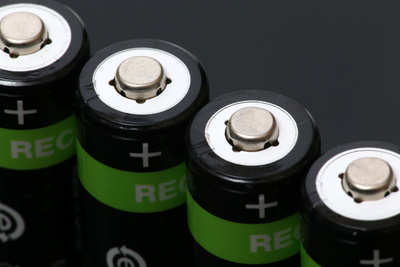One of more than 20 speakers was Alain Vassar, Secretary General of the European Battery Recycling Association (EBRA). In his view, a number of conditions still need to be met before recycling loop for lithium can become established, one of which is a sufficient, constant flow of recyclable material, which has not been the case so far. Moreover, the various recycling processes, which are currently still at the testing stage, need to become economically viable in order to be competitive. Finally, the price of lithium needs to establish itself at a high level for a stable period of time in order to justify investments in corresponding recycling processes. At the present point in time, however, these conditions have not yet been met.
Vassart therefore warned against exaggerated expectations on the part of the recycling industry – despite all the positive growth forecasts for lithium-ion batteries. In the short term, we cannot expect to see large volumes of lithium generated from used lithium-ion batteries. Generally speaking, there is less than three per cent lithium in the material mix present in these types of battery, even in car batteries. Even if the good market forecasts turn out to be correct, lithium recycling will only be able to make a marginal contribution towards supplying the battery manufacturing market with lithium, Vassar emphasised.
Adam McCarthy, Director of European Government Affairs at Albemarle, stressed that Europe is a significant user of lithium-based batteries, but not a lithium salt producer. „So one could wonder about the general lithium market expectations“, he said at the press conference. McCarthy expects to see continued growth in demand for lithium, mainly driven by the electric mobility market.
Whilst supply of lithium salts is currently tight, McCarthy predicted that more capacity is coming on line, which will impact prices. „All in all, this means more lithium for more batteries in circulation.“ Although there is full support for the drive towards a more circular economy, all market participants need to take into account the price impact of the raw material, as the circular economy has to make sense for each sector and must add social, economic and environmental value.
At the moment, lithium battery recycling, with some exceptions, is still in its infancy and not yet fully economical, he concluded. „It is, however, generally understood and accepted that the newest recycling processes will form a key part of the electric mobility revolution and further develop.“
The topic of transport safety was also closely examined during the conference. Generally, speaking, the transporting of automotive lithium-ion batteries does not constitute a significant risk. Even the risk of transporting damaged batteries can be well calculated and minimised through the use of suitable package, explained Dr. Fabian-Alexander Polonius, safety adviser dangerous goods at automotive manufacturer Daimler, who presented a package of measures designed to minimise the risk.
Accordingly, when registering each battery, the first thing is to determine whether it is actually a lithium-ion battery. The next step is to assess the battery and determine whether it is suitable for safe transportation. The third task is to establish whether the battery has been UN-tested and manufactured in accordance with the respective quality requirements. Finally, selecting the correct means of transport can also play a key role.
A transparent, standardised process is definitely an essential criterion for the safe handling of lithium-ion batteries and ensuring consistent implementation by well-trained personell, the hazardous goods expert emphasised. If all the points contained in the package of measures have been followed and, furthermore, a suitable type of packaging has been selected, they can be safely transported without uncessesary risk.








